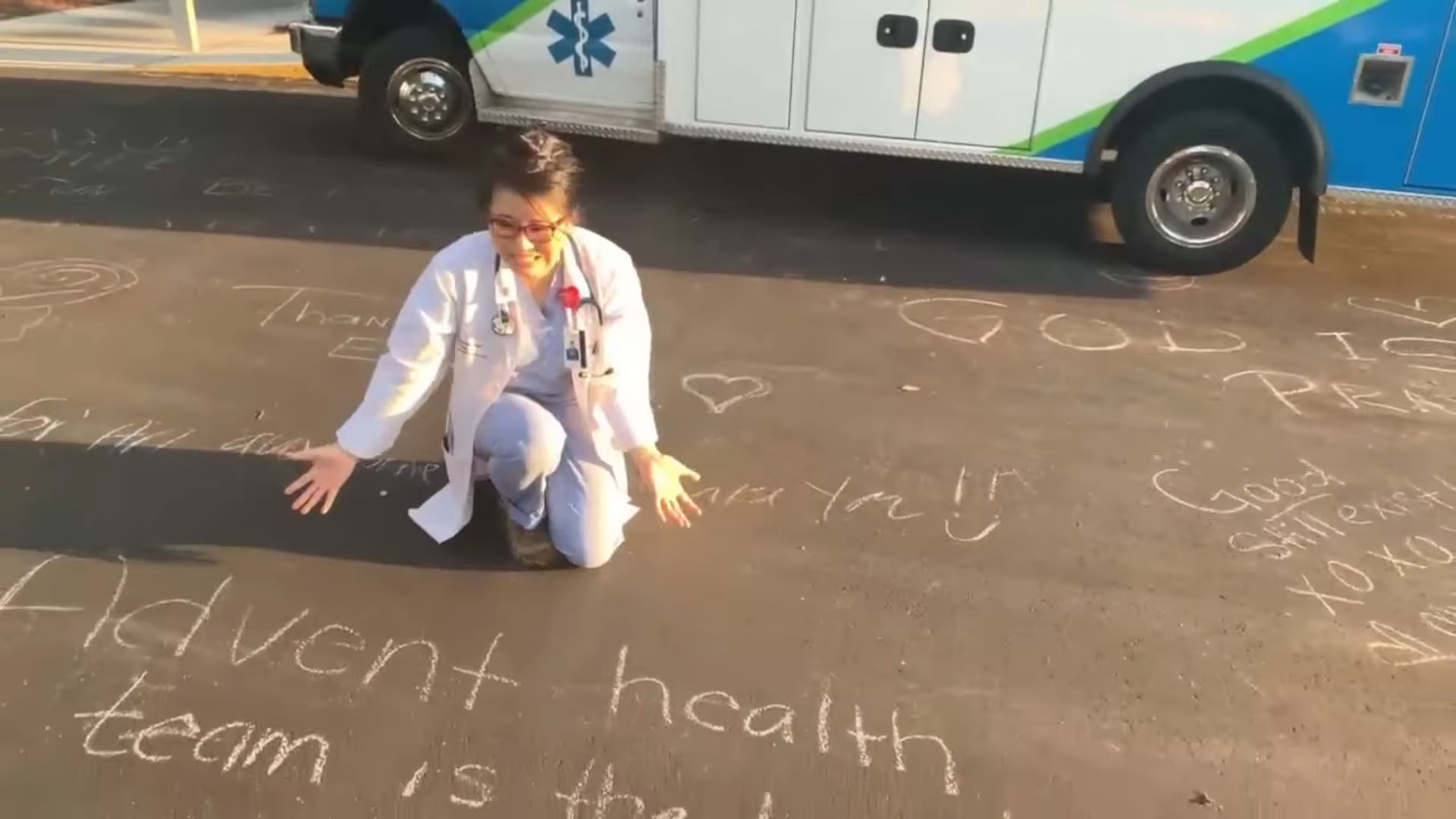The pandemic illness called COVID-19 that is sweeping across the country is caused by a novel Coronavirus that we now know as SARS CoV2. While some people who are infected with the virus are asymptomatic, many experience symptoms range from a mild respiratory or somatic issues such as cough, tiredness, and fever to more serious difficulty breathing and severe acute respiratory distress syndrome (ARDS) or even death.
Do you know that coronavirus infection is not new to us?
— Approximately 10-20% of the common cold cases are caused by 1 of the 4 Coronavirus with the elderly and very young being particularly susceptible.
The symptoms of the common cold usually last for only a week or two. Just like most respiratory viral infections, after an episode of fighting a cold, our immune system’s response provides us with protection, via antibodies, against that particular Coronavirus that usually lasts for about a year. That protection is specific to that version of Coronavirus and, of course, you could still catch a common cold from another type of virus. Besides the previously mentioned four Coronavirus, the usual suspects of viral pathogens that cause cold include rhinovirus, enterovirus, RSV (respiratory syncytial virus), and parainfluenza. All of these “common cold” viruses are often screened by blood test panel for patients with respiratory symptoms.
Because we human, almost all of us will inevitably have experienced respiratory infections caused by one of the viruses throughout our lifetime. Therefore, even when we attacked by these viruses, the symptoms we suffer from the illness are not usually serious. However, the viral respiratory infection may cause serious outcomes if it triggers an exacerbation of an underlying serious baseline medical condition (such as heart disease or chronic lung conditions) or if it occurs in people with impaired immune system (such as people undergoing chemotherapy for cancer, people with autoimmune diseases, people taking immunosuppressants for an organ transplantation, or people with poorly-controlled diabetes).
As noted previously, we call this a novel Coronavirus, SARS CoV2, because is completely new to human beings. The fact that humans have no biological experience with this virus means that the virus can completely startle our immune system causing an extreme immune response with high risk of death.
SARS Cov2 can cause both direct and indirect damage to our bodies. The virus can directly cause severe damage to our lungs, but it can also indirectly cause a maladaptive immune response which, in turn, leads to acute respiratory distress syndrome (ARDS), and subsequently, multi-organ failure and death. People who are older than 65 years of age or younger people with serious underlying medical conditions are at higher risk of developing serious symptoms and poor outcomes from this virus.
In addition, unlike its cousins, SARS of 2002/2003, and MERS 0f 2014/2015, SARS CoV2 has even stronger affinity to the human ACE2 receptors which are located abundantly in our respiratory system, blood vessels, gastrointestinal tract, and bladder. Although the current mortality rate for COVID-19 is lower than that of SARS and MERS, the infectious rate is higher. And at this time it is estimated that the transmission rate without intervention (R0) is 3, meaning one infected person shedding the virus will infect at least 3 other people.
So far, there is no proven effective antiviral therapy and there is no vaccine. The current data show that among 100 COVID-19 patients, about 15-20 of them may require hospitalization for supportive care. And a fraction of the hospitalized COVID-19 patients will require intensive care including mechanical ventilation and extracorporeal membrane oxygenation (ECMO).
A young person without previous underlying serious diseases, even if his COVID-19 is so severe that he requires mechanical ventilation, would have a much higher chance of recovery, compared to an older person or someone with prior poor health status.
We have seen a high degree of variability in the mortality rates for COIVD-19 across the globe. South Korea is on the low end with a reported mortality rate of 0.8% while Italy has a sobering mortality rate of 10%. With the lack of consistency in each area for testing and tracking the causes of death, the “true” mortality rate is hard to accurately determine. To put those numbers into perspective, the mortality for influenza is 0.8%. We need to remember that, when dealing with influenza, we have vaccines and effective antiviral therapy.
If the R0 of SARS CoV2 is 3 (1 person spreads to 3 people), then two-thirds of the human population will need to have immunity in order to stop the virus from continuing to spread. There are only two ways to obtain this immunity, either a person by becoming infected by the virus and recover or the person must be inoculated with the vaccine specific to this virus.
The process for developing a vaccine has much for stringent standards than the process for developing medications because vaccines are biological products administered to healthy people to activate an immune response. The development process from pre-clinical research to the end of the clinical trials (phase 1 to phase 3) can often take 7-10 years and cost a billion U.S. dollars.
In mid-March 2020, a few phase 1 clinical trials were started for the vaccine against SARS Cov2. And if all goes smoothly, we may have a safe and effective vaccine 1.5 to 2 years from now. As mentioned previously, until the vaccine is ready, the only way to acquire immunity is through getting the infection.
From what we have seen from the end of December 2019 to now late March 2020, COVID-19 has spread rapidly across the globe and there are few signs of it slowing down. Therefore, at this time, I think that we have to accept the fact that two-thirds of us will probably be infected before the virus stops spreading. If we have the good fortune to develop a SARS CoV2 vaccine in a year or two, then we can have some help the next time this virus goes round.
Since we have to come to terms with the high likelihood of getting infected ourselves, we should work hard to delay our own infection as much as possible. At this time there large number of people, many of whom suffering tremendously, in the densely populated metropolitan areas across the United States, such as New York City, so the transmission seems likely to continue unabated. Our entire country is pouring every effort into supporting the worst affected locations by sending medical equipment, personal protection material and healthcare personnel to supplement the existing, and currently profoundly strained, healthcare systems in those areas.
We Floridians have the good fortune in the face of this horrendous pandemic to live in a relative less populated and much warmer region of the country. We should try our best to flatten the infection curve to spread out the burden on our healthcare resources.
Theoretically, in a small city without a strong effort in flattening the curve, this virus is going to cause 1000 people to suffer a serious form of COVID-19 that requires hospitalization or even critical care over the next month. If the healthcare capacity of the city can only handle 500 critically ill patients, then the other 500 severely ill patients would not be helped with our standard of care because there may not be enough medical equipment and healthcare workers to give them the full spectrum of critical care. This would leave those 500 undertreated people with a very high likelihood of dying. We have seen this scenario play itself out in Italy. We also need to keep in mind that there are always “other”(i.e. non-COIVD-19) people who will need critical medical care. Those people will also suffer and may even die when the healthcare system is overwhelmed.
Therefore, it behooves everyone in this city to do his part to slow down the spread of the virus. By making the narrow and sharply-peaked infectious curve to become a flat, albeit wide-based curve, the top of the curve will remain within the maximal capacity of the healthcare system in this area. With aggressive mitigation, even though the base of a flat curve is wider than the high peaked curve, the area under the curve (i.e. the total number of patients) will be smaller.
An analogy of flattening the infectious curve I would like to use is the amount of rainfall we would get over the course of a year. Imagine the amount of rain for this year is going to be 10 times the average. Wouldn’t you rather have this tremendously increased “rainy season” span over a period of 9 months than having a horrid, nonstop deluge of rain over the course of a month that would flood the entire state?

So, what should we do? How should we do our part to mitigate the pandemic?
First, as common sense dictates, whenever you have any respiratory symptoms, regardless whether it is caused by SARS Cov2, wear a mask, so that you can prevent others from getting the virus from you through droplets when you talk, cough, or sneeze. In fact, even when you are not sick, during the pandemic of a respiratory infection it is prudent to wear a mask whenever you are in public. The mask can be made of cloth, as any barrier to the droplets is better than none. And of course, when you are out in nature, open air, and no one is within 6-ft of you, then you do not need to wear a mask. Physical distancing (AKA social distancing) by 6 to 8-feet is one of the best measures to slow the spread of COVID-19.
Secondly, since SARS Cov2 is a viral pathogen, it spreads mostly through droplets and contacts just as other viral pathogens that cause respiratory disease spread. Surfaces that receive droplets and are likely to carry infection are called fomites. These surfaces can include clothes, eating utensils, furniture and all objects with which we often come into contacts such as telephones, desks, keyboards, laptops, and doorknobs. When we touch these objects the virus containing droplets is lifted off the surface on carried on our skin. We have not yet become infected at that point. However, when we use our virus laden hands to touch our face, the viruses can easily get transferred to the mucosal areas of our mouths, nostrils, and eyes which causes us to become infected with COVID-19. Therefore, frequent hand washing using soap, and if there is no water, hand cleaning with sanitizer containing at least 60% of alcohol, is essential after you touch any objects located in an area that sees a lot of foot traffic and people touching surfaces. When you clean your hands, it is important to remember to allow at least 20 seconds for the soap or sanitize fluid to work on deactivating or killing the viruses. When I say “hands”, it’s not just your palms and the part of your fingers that is close to your palm. In fact, it is extremely important to thoroughly clean your fingers tips, since it is your fingertips that transfer viruses to your mouth, nose and eyes.
Most people, including myself, unknowingly use our hands to touch our face throughout the day. If you find that you have trouble not touching your face, then you might benefit from wearing a mask all the time no matter whether you are indoors or outdoors. This way the mask can act as a barrier when you accidentally touch your face with your hands presumably covered with virus that had been lifted from things that you just touched.
Also, “stay at home” or “shelter in place,” even just 2-4 weeks, is very effective in limiting people movement and droplet or contact transmission and hence slowing down the spread of infection. A longer period may not be easy to tolerate in terms of personal freedom and economic activities. However, even 2-4 weeks of severely cutting down the frequency of interacting with people will successfully flatten the infectious curve. However, it is possible that when people resume normal, pre-COVIOD-19 activities and forget to continue the practice of social distancing and hygienic handwashing, we may see the COVID-19 infection rate rear its head and climb again. At that time, we may have to repeat “stay at home” for another few weeks or months.
In the meantime, I am hopeful that we will be able to use a combination of rapid testing for antibody (to know who is immune) and rapid testing for COVID-19 virus to help people carrying the virus to intensify their effort to self-quarantine. This would reduce the need for a general, community-wide “stay at home” order. This way only people who still have virus will need to stay at home and people who have the antibody, meaning they already acquired immunity to COVID-19, can continue to work, go to school, and be out and about.
Until then, let us be good citizens, stay at home, and observe social distancing. Protect yourself and your families, protect all of us.
Puxiao Cen , MD, FACC, MHE Facebook channel: On Your Health 醫家傾幾句












